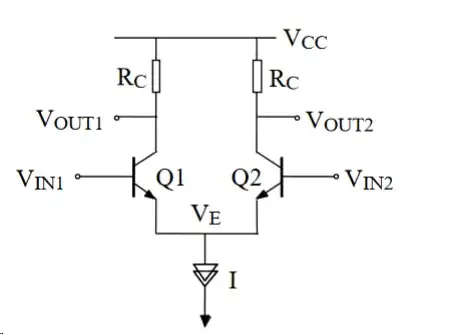Let`s calculate the common mode gain Acm (real case with a finite dynamic resistance re in the common emitter leg):
(1) Forgetting - for the first moment - the second transistor Q2, the first transistor Q1 is operated in common emitter configuration (with current-controlled voltage feedback provided by a finite dynamic resistance re in the emitter leg): Hence, the gain is
A=-gm * Rc/(1+gm * re).
(2) The same gain applies to Q2 (without Q1). Now - when both transistors are active and excited with the same input voltage (common mode), the current through re will be doubled (compared with case 1) causing a doubling of the feedback voltage. This can be incorporated into the given gain formula by replacing re with 2re. Hence, the common mode gain expression is:
Acm=A=-gm * Rc/(1+gm * 2re).
This expression shows that the common mode gain will be zero for an ideal current source (re approachung infinite) only.
Note: The above (rough) calculation is accurate enough to demonstrate the systematic common mode effect caused by the a finite re. Other influences (asymmetry effects, Early-effect,...) are neglected.



So lets say we have a current mirror as a source and a Wilson current mirror then this error would be reduced with a Wilson current mirror as the output impedance would be higher. But why exactly would this lead to the common mode voltage gain? how does it increase Vout if output impedance is not infinite?
– fred Mar 19 '19 at 01:17